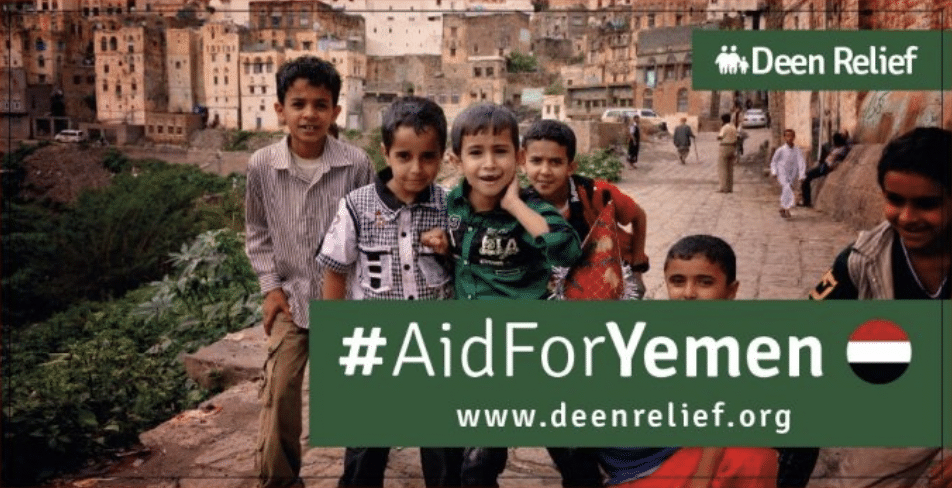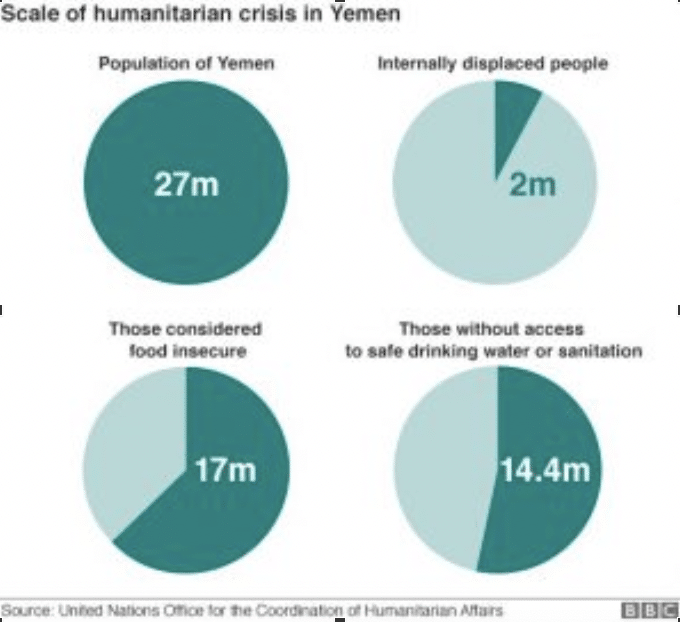The country is experiencing a ‘humanitarian catastrophe’
That was the frank assessment by a senior UN aid official back in August 2015, and one that was repeated by Emergency Relief Co-ordinator Stephen O’Brien in a statement to the UN Security Council in October 2016.
The UN says more than 7,600 people – mostly civilians – have been killed and close to 42,000 others injured. More than three million people have been displaced and seven million people do not know where their next meal might come from.

The World Food Programme’s executive director, Ertharin Cousin, warned in March 2017 that aid workers faced a “race against time” to prevent a famine, adding: “We have about three months of food stored inside the country.”
As of March 2018, an estimated 18.8 million people – 69% of Yemen’s population – needed some kind of humanitarian or protection assistance, according to the UN Office for the Co-ordination of Humanitarian Affairs (OCHA). That includes 10.3 million in acute need, who urgently require immediate, life-saving assistance in at least one sector.
The scale of the humanitarian crisis
An estimated 17 million people are considered food insecure and 6.8 million severely food insecure – 3 million more than in January 2017.
About 3.3 million children and pregnant or breast-feeding women are acutely malnourished, including 462,000 children under five who face severe acute malnutrition. That represents a 57% increase since late 2015 and threatens the lives and life-long prospects of those affected, according to the UN.

The World Food Programme has classified seven of Yemen’s 22 provinces as being at “emergency” level – one step below famine on the five-point Integrated Food Security Phase Classification scale. Ten provinces are at “crisis” level
Please help us, help as many children as we can with essential, life-saving food and basic supplies.
